
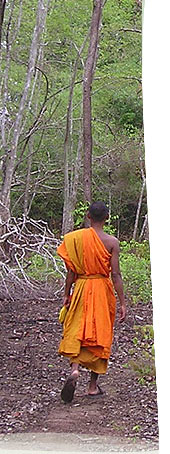
Community Forestry International Publications
Fri, Oct 19 2007
 Please Note:
You will need Adobe Acrobat to view the downloads.
Please Note:
You will need Adobe Acrobat to view the downloads.
Click here to Download Adobe Acrobat reader Free
Research Reports -
Working Papers -
Articles -
Field Methods Manuals
Regional Studies -
Other Publications -
Publications in Khmer
CFI Newsletters -
CFI Annual Reports -
Mini-Reports
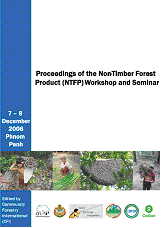
|
2007 People in the Forest: Community Forestry Experiences from Southeast Asia. Click here to view (Adobe PDF document) This paper documents experiences with community forest management in five Southeast Asian nations. It briefly describes the historical and political context that frames contemporary forest sector changes, examining important shifts occurring in the forest policy sector in Cambodia, Indonesia, the Philippines, Thailand and Vietnam, following the decline of industrial forest management paradigms over the last two decades and the emergence of a new generation of environmentally and socially-oriented policies and legislation. The paper explores how these new policies, laws, and national programs are affecting forest-dependent peoples across the region in an effort to track the transition in forest management on the ground. The paper also examines how community forestry systems are affecting forest cover, biodiversity, and rural livelihoods. |
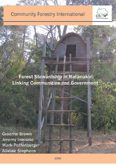
|
2007 Forest Stewardship in Ratanakiri: Linking Communities and Government Click here to view (Adobe PDF document) This report draws on the results of research into traditional law and conflict resolution recently carried out in 15 indigenous villages in Ratanakiri and 3 in Mondulkiri Province. The researchers in this study were indigenous elders from the Highlanders Association and youth from the Indigenous Youth Development Programme (IYDP part of Non Timber Forest Products (NTFP) Project, Ratanakiri). The IYDP researchers also wrote the reports of this village research which from the basis of this report. This report also draws on the experience of the Ratanakiri Network Support Program, an initiative that involves interactions of over one hundred indigenous extension workers engaged in dialogue with settlements in 20 communes across the province. |
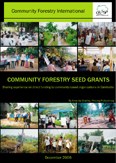
|
2007 Community Forestry Seed Grants. Sharing experience on direct funding to community-based organizations in Cambodia Click here to view (Adobe PDF document) This report shares the experience of the CFI Seed Grant Program in Cambodia that was established in mid-2005 with to pilot a mechanism for providing support directly to communities enabling them to establish Community Forestry or Community Protected Areas. The CFI strategy uses an “empowerment approach” to assist communities to help themselves by providing small funds directly to approved groups for community forestry activities which they initiate, plan, and budget for by themselves. In this model, the community needs to establish consensus independently and is responsible for a large part of the planning, decision-making, managing, implementing, and documenting. |

|
2006 Communities and Forest Stewardship: Regional Transitions in SE Asia Over the last five years, AFN examined various facets of community forest management in Southeast Asia, concentrating on five countries – Cambodia, Indonesia, Philippines, Thailand and Viet Nam. Policy makers, community members, and field practitioners - bound together by their commitment to restore Asia’s forests - discussed and reflected on themes covering transitional experiences in CFM policies, practices, prospects and partnerships in the region. The central themes and insights from these discussions and reflections have been captured in a regional synthesis report, "Communities and Forest Stewardship: Regional Transitions in Southeast Asia".
In collaboration with the Ateneo de Manila University Press and the Environmental Science for Social Change, "Communities and Forest Stewardship: Regional Transitions in Southeast Asia" was launched on 16 June 2006 at the Manila Observatory Building, Ateneo University Campus, Quezon City, Philippines.
|
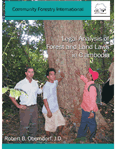
|
2006 Legal Analysis of Forest and Land Laws in Cambodia. Click here to view (Adobe PDF document) This report provides a brief introduction to recent Cambodian legislation and policies related to land, forests, and the role of communities in their management. The report is comprised of legal and policy analysis papers compiled by Mr. Robert Oberndorf, J.D. between 2003 and 2005 as a consultancy for Community Forestry International. The report is intended to provide guidance to development agency staff, NGOs, students, and professionals who are interested in gaining a basic understanding regarding the emerging legal and policy environment in Cambodia, especially as it affects the relationship of rural communities to land and forest resources. |
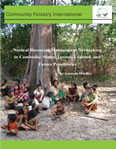
|
2006 Natural Resources Management Networking in Cambodia: Status, Lessons Learned, and Future Possibilities. Click here to view (Adobe PDF document) In Cambodia, civil society has been given a relatively large degree of freedom to form associations or networks, both formal and informal. These networks have been functioning for a number of years with varied success. Many individuals and groups involved with networks have been gaining skills and knowledge through practical experience. This study aims to gather ideas from some of these individuals, as well as the author’s own experience participating in and interacting with several of these networks. This report introduces most of the existing NRM networks in Cambodia and analyzes some of the general issues related to networking in Cambodia. |
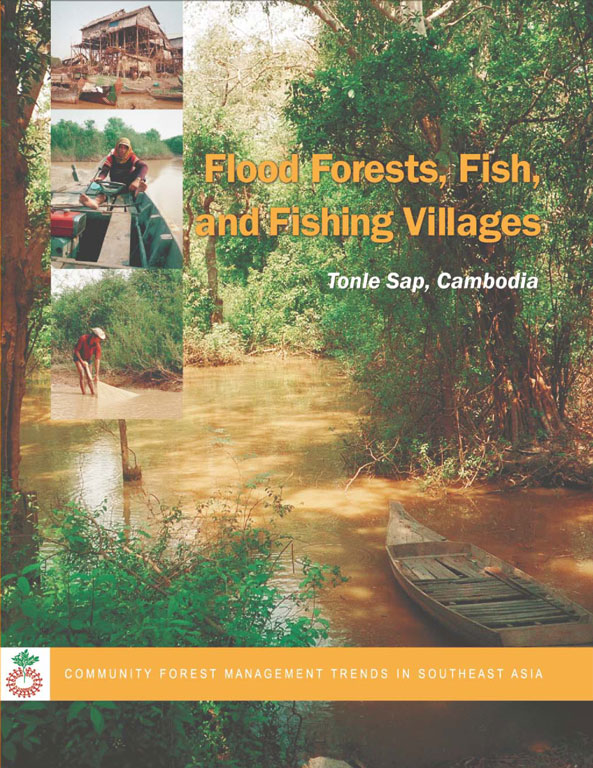
|
2005 CAMBODIA Flood Forests, Fish, and Fishing Villages Tonle Sap, Cambodia. Click here to view (Adobe PDF document) This study describes the experiences of Kompong Phluk, a Khmer community that has been attempting to protect its flood forests and fishing grounds for the past fifty years. The report examines how the community, assisted by a FAO project, has developed a resource management organization, formulated rules and regulations, sought government approval, and designed a comprehensive resource management plan. The report details some of the challenges and issues that they have faced in the process. |
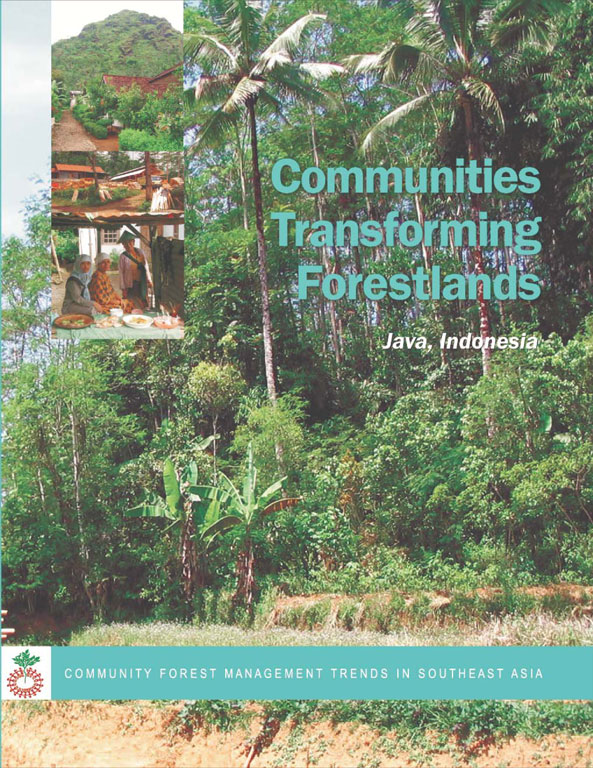
|
2005 INDONESIA Communities Transforming Forestlands Java, Indonesia Click here to view (Adobe PDF document) In Java, the nation’s most populated island and the longest to be subjected to scientific-based plantation management, communities took these reforms as a signal that a more socially-inclusive forest management system is on its way. They started transforming degraded or barren state enterprise plantations into agroforestry systems, hoping that they would benefit from timber harvesting in the future. Reformation opened up avenues for multi-stakeholder approaches to flourish. The Indonesian Communications Forum on Community Forestry (FKKM) was instrumental in bringing stakeholders together and emphasizing the involvement of forest farmers in policy development and program implementation in Java. This case study illustrates the challenges in getting decentralization to work for local people and the environment and describes the transformation that communities have carried out on the land. |
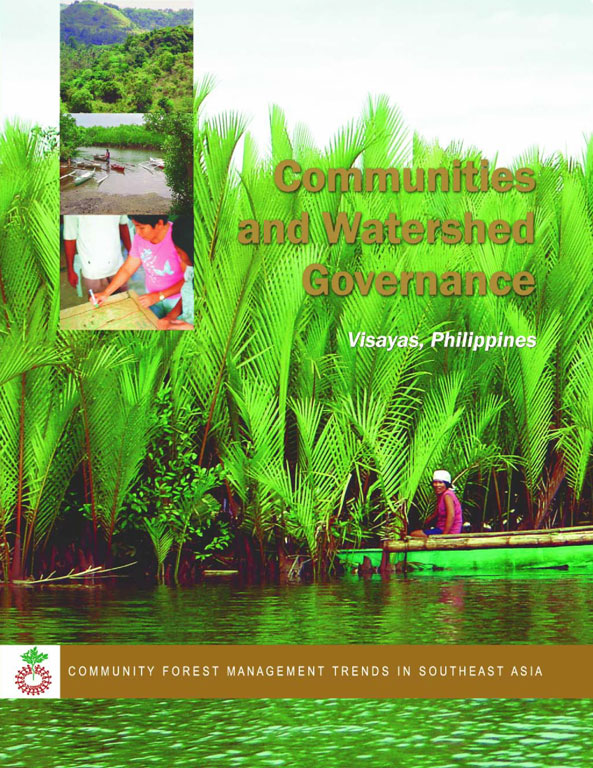
|
2005 PHILIPPINES Communities in Watershed Governance Visayas, Philippines Click here to view (Adobe PDF document) This report is a case study of two watersheds in the Visayas region that provides important insights into how coastal and upland communities are interacting with local and national governments to develop their own unique approach to terrestrial and aquatic resource use and conservation. |
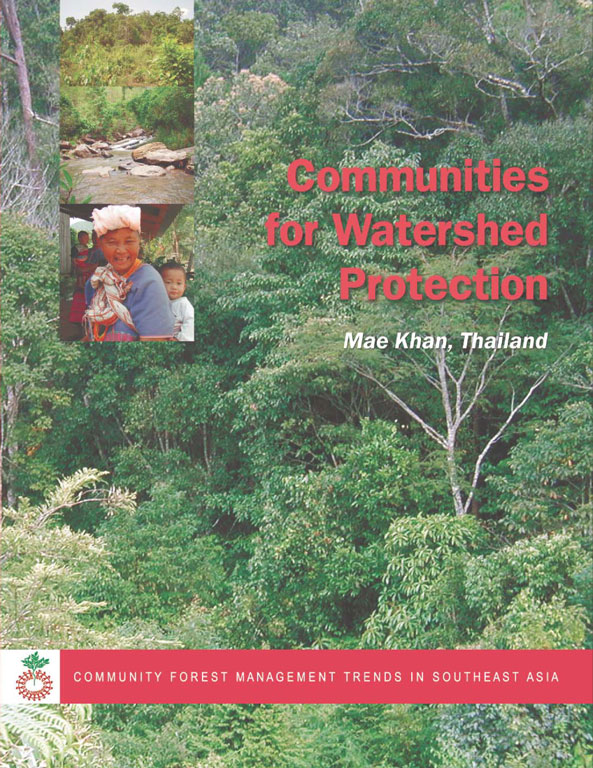
|
2005 THAILAND Communities for Watershed Protection Mae Khan, Thailand Click here to view (Adobe PDF document) This report summarizes recent experiences in formally establishing community-based forest management in the Mae Khan Watershed, Chiangmai from January through December 2002. The study examines village-based forest management practices among highland, upland, and lowland communities in Mae Wang Sub-watershed. The target villages represent different cultural communities including Hmong, Karen, and ethnic Thai, providing opportunities to explore how different traditions of resource management could be integrated into emerging local government (Tambon) natural resource management strategies. |
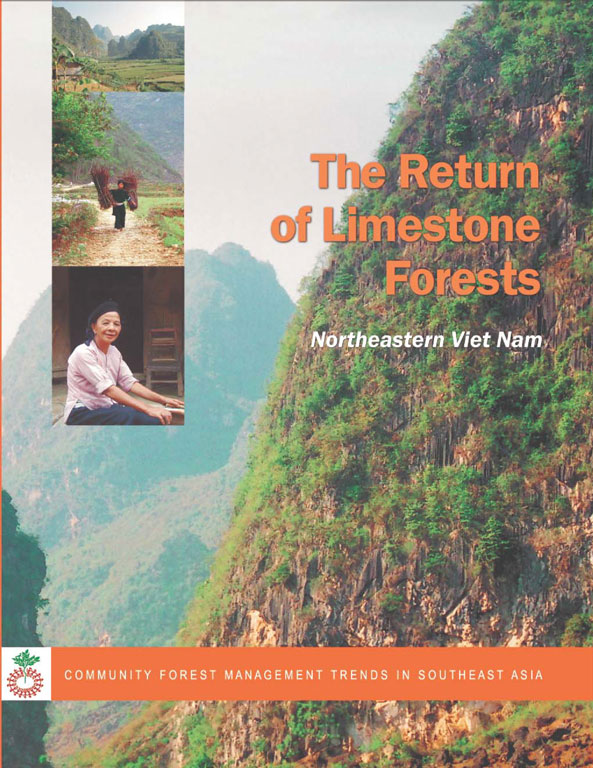
|
2005 VIET NAM The Return of Limestone Forests Northeastern Viet Nam Click here to view (Adobe PDF document) This case study describes how a network of village-based forest management groups in Cao Bang Province are working together to establish a network and create formal linkages to the district and provincial government. The report illustrates how indigenous forest management systems are entering into dialogues with local government officials and gaining legitimacy. The Forest Inventory and Planning Institute (FIPI) has worked with community leaders and local government officials to design, facilitate, and document a networking process that brings community leaders and local government together to allow for coordinated planning and facilitate the integration of forest management systems a the district and provincial level. |
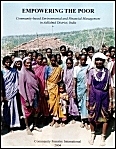
|
2004 Empowering the Poor: Community-based Environmental and Financial Management in Adilabad District, India Click here to view (Adobe PDF document) This report chronicles the emergence of women’s thrift groups and the development of their cluster organizations and networks in the tribal regions of Adilabad District, Andhra Pradesh, India. These nascent organizations provide new vehicles to empower some of India’s poorest and most exploited communities. Self-help Groups or SHGs take the form of village cluster organizations and sub-district level federations, providing a sustainable infrastructure for the small groups of 10 to 15 women who comprise each SHG. SHGs now possess over several hundred million dollars in assets in the state of Andhra Pradesh alone, and are gradually displacing moneylenders and middlemen as primary sources of capital in the rural economy. This study focuses on the development of these apex bodies and explores how these organizations are securing and managing watershed restoration contracts from inter-agency bodies that are created to coordinate national and international investments targeting rural poverty problems. |

|
2004 Transit Rules for Forest Products in NE India Click here to view (Adobe PDF document)
|

|
2004 Indigenous Forest Stewards of Northeast India Click here to view (Adobe PDF document) This report was prepared for the World Bank to provide input into the larger natural resource management and development sector review that the organization is currently undertaking. CFI was asked to prepare the assessment, as it has already been engaged in reviewing the forest sector with local partners over the past three years to formulate recommendations for enabling legal frameworks and program strategies to facilitate community-based forest conservation and management. |
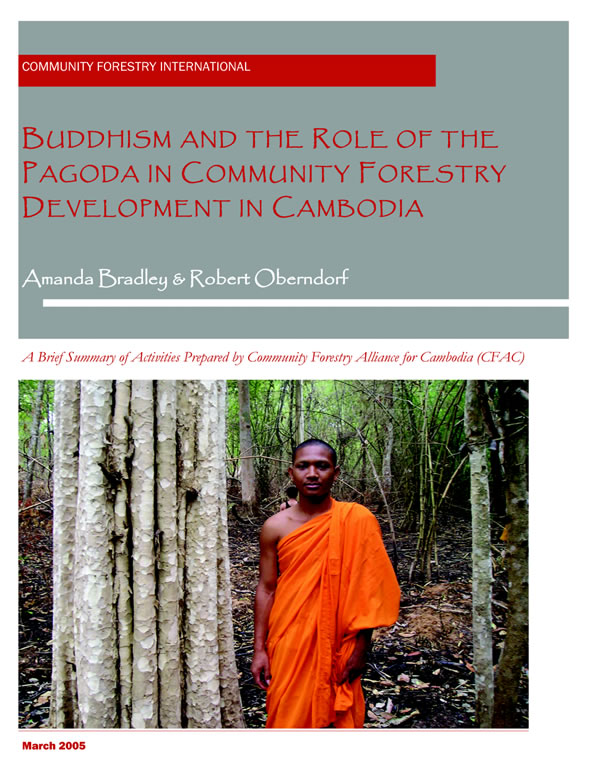
|
2004 Buddhism and the Role of the Pagoda in Community Forestry Development in Cambodia Click here to view (Adobe PDF document) The prospect for developing community forestry through the pagoda is a relatively new concept in Cambodia, however, there are some interesting models and initiatives which are already underway in several different provinces. There are a number of challenges as well as benefits to be anticipated. This report presents short summaries of the Buddhist organizations that are currently assisting rural communities with natural resource management in Cambodia. |

|
2004 Role of the Courts and Implications for Community Forestry in NE India Click here to view (Adobe PDF document)
|
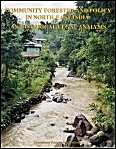
|
2004 Community Forestry and Policy in North-East India: An Historical Analysis Click here to view (Adobe PDF document) |
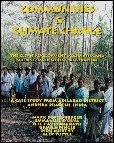
|
2002 The Clean Development Mechanism and Village-Based Forest Restoration in Central India: A Case Study from Adilabad District, Andhra Pradesh, India Click here to view (Adobe PDF document) This report present the findings of a research project aimed at evaluating a series of potential CDM sites to assess their eligibility in terms of the emerging CDM forest project parameters of the Kyoto protocol. In selected areas, social and ecological appraisals were carried out to assess institutional capacities for CFM project implementation as well as to evaluate vegetation conditions and the potential for carbon sequestration under a variety of CDM scenarios. The report also presents techniques for vegetative sampling for establishing carbon baselines, estimating carbon additionality, and creating CDM project scenarios for community-based afforestation and reforestation projects. |
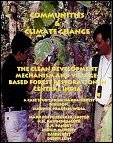
|
2001 The Clean Development Mechanism and Village-Based Forest Restoration in Central India: A Case Study from Harda Forest Division, Madhya Pradesh, India Click here to view (Adobe PDF document) This report present the findings of a research project aimed at evaluating a series of potential CDM sites to assess their eligibility in terms of the emerging CDM forest project parameters of the Kyoto protocol. In selected areas, social and ecological appraisals were carried out to assess institutional capacities for CFM project implementation as well as to evaluate vegetation conditions and the potential for carbon sequestration under a variety of CDM scenarios. The report also presents techniques for vegetative sampling for establishing carbon baselines, estimating carbon additionality, and creating CDM project scenarios for community-based afforestation and reforestation projects. |

|
1998 Stewards of Vietnam's Upland Forests - A collaborative study by the Asia Forest Network and the Forest Inventory and Planning Institute Click here to view (Adobe PDF document) Part I provides a brief history of forest management in Vietnam, followed by an assessment of the sociopolitical and demographic forces that are the underlying causes of deforestation. Part II examines changes in national forest policies, focusing on the transition from state control to household management. The success of emerging privatization policies and programs in stimulating increased timber productivity in some lowland and midland regions is contrasted with the difficulties encountered when such projects are implemented in upland contexts, especially where communal forest management traditions persist. Part III describes how Tai and H'Mong communities in Yen Chau District in the Da River watershed of Northwest Vietnam use their forest resources and discusses some of the forest management issues villagers face as demographic pressures build and policies change. Part IV reviews how one Dzao village was resettled in a buffer area, bounding on Ba Vi National Park near Hanoi, and how villagers continue to depend on the forest for their livelihoods. Both case studies illustrate ways community forest use practices are supported by and are in conflict with emerging policies. Part V synthesizes the information presented in this monograph and suggests how community forest management policies and programs could be strengthened in the uplands and made more responsive to local cultures and indigenous management systems. |

|
1997 Linking Government with Community Resource Management Click here to view (Adobe PDF document) This report brings together the materials and ideas presented at Surajkund, drawing from the panels and discussion groups. In compiling this report, the editors also draw on their own field visits, trip reports, and discussions with Network members and other practitioners over the part two years. This report builds on discussions at Surajkund to provide a regional synthesis of community forest management experiences emerging in Asia, highlighting what's working and what's not. |
|
1996 Facilitating Collaborative Planning in Hawaii's Natural Area Reserves - coming soon |

|
1996 Grassroots Forest Protection: Eastern Indian Experiences Click here to view (Adobe PDF document) These case studies document patterns of forest protection committee formation, spread, and consolidation. While management strategies and issues vary, the studies show a large and growing number of communities are attempting to take control of degrading public forestlands in an effort to conserve resources and ensure ecological functions. These reports also indicate that community forest protection is an expanding rural social movement in eastern India. While informal management groups adopt a myriad of institutional configurations, they are consistently rooted in concerns over environmental degradation. This grassroots movement appears to have antecedents in the late nineteenth century, with its most recent manifestation originating in the 1970s. Since the late 1980s, forest departments have begun to recognize the rights and responsibilities of local forest managers under the banner of joint forest management, enacting supportive national and state resolutions. |

|
1995 Transitions in Forest Management: Shifting Community Forestry from Project to Process Click here to view (Adobe PDF document) This report presents the meeting highlights of the annual meeting of the Asia Forest Network with new concepts emerging from the field that have potential to assist in the shift from project to process orientation. Human knowledge regarding natural forest ecosystems is largely composed of information from the modern science of silviculture, applied forestry research, and community-based environmental knowledge. Government forest management systems have relied almost exclusively on the knowledge generated from the two branches of silviculture research and applied research. The terminology, conceptual frameworks, problem foci, and management goals used by professional foresters have been shaped through this perspective and have profoundly influenced forestry policy and practice throughout the Asia region. While this has brought a wealth of information and an analytic structure to the hands of planners, it has also determined a European-derived terminology and conceptual orientation to Asian forest. At the same time, the third branch of community knowledge holds the accumulated knowledge from thousands of years of Asian experimentation in manipulating forests for societal needs, knowledge that has been largely ignored.This predominant reliance on western concepts of silvicultural and applied research has erected barriers to community integration. In part, this results from the use of foreign management concepts, extension frameworks, and terminologies that impede communication. Terms like "biodiversity" and "sustained yield felling cycles" have little meaning to indigenous forest users and are therefore difficult to translate. Yet, Asian communities have extensive and diverse indigenous experience with a wide range of forest manipulation and use systems that are often sustainable and foster biodiversity. This field-based reality needs to be communicated to the government sectors, with policies and programs modified to support indigenous management systems, to integrate them into national planning. |

|
1994 Upland Philippine Communities: Guardians of the Final Forest Frontier Click here to view (Adobe PDF document) This report provides a preliminary discussion of selected research findings from the Philippine members of the Southeast Asia Sustainable Forest Management Network. The Filipino team at the Environmental Research Division (ERD) of the Manila Observatory has been involved in diagnostic studies of the two research sites for several years. In the future, the ERD staff hopes to continue to work with these upland communities to assist them in stabilizing their natural resources and developing integrated watershed management plans. The Philippines team appreciates its continuing support from the Rockefeller and Ford Foundations. The team members would also like to acknowledge the cooperation they have received from the Department of Energy and Natural Resources. Finally, the authors would like to express their gratitude to the residents of Gabaldon, Malinao, St. Peter, Zamboangita, and Bendum for their hospitality and friendship. It is their dedication and commitment to protect their homelands against more powerful outside interests that has inspired the team to work with them and support their efforts at stabilizing the upper watersheds. |

|
1993 Communities and Forest Management in East Kalimantan Click here to view (Adobe PDF document) This report provides a preliminary discussion of selected research findings from the Indonesian members of the Southeast Asia Sustainable Forest Management Network. The two study teams have recently concluded the first round of data collection and plan to return to the field in June 1993. Consequently, the information discussed here and the recommendations provided should be viewed as tentative, requiring further confirmation in the field. Future research reports will provide more detailed ecological and economic information concerning conditions and changes in the study areas. |

|
1993 Community Allies: Forest Co-Management in Thailand Click here to view (Adobe PDF document) This report provides a preliminary discussion of their research findings concerning community forest management, highlighting case studies in Dong Yai, located in Ubon Ratchathani Province in the Northeast, and Nam Sa subwatershed in northern Chiang Mai Province. The information and the recommendations provided should be viewed as tentative, requiring further study, analysis, and field verification. |

|
1992 Sustaining Southeast Asia's Forests Click here to view (Adobe PDF document) This report announced the formation of the Asia Forest Network and outlines a collaborative action research program to explore forest sector transitions underway in the region. The report includes country-level summaries from Indonesia, Thailand, and the Philippines with a discussion of selected field research sites. |